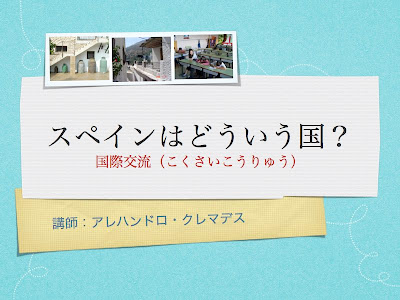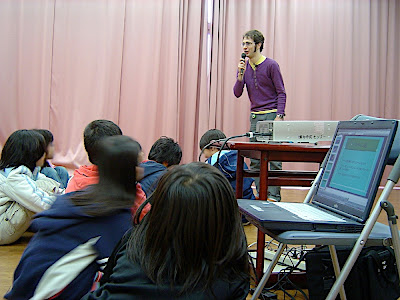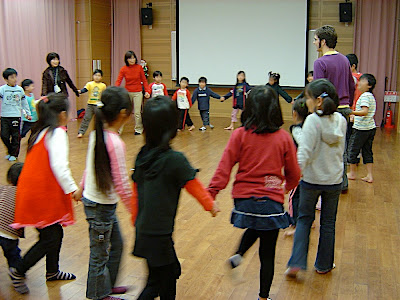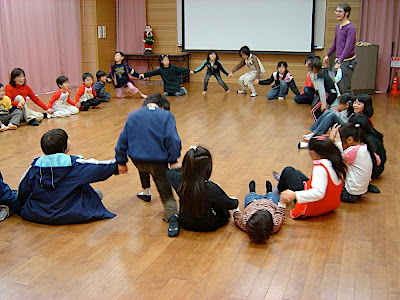La semana pasada el vídeo blog Mobuzz.tv publicó un programa en el que presentaban a Hatsune Miku, la cantante virtual. Los habituales de ese blog no se sorprendieron mucho, pero el vídeo ha corrido como la pólvora por los circuitos otaku japoneses y la mayoría no se lo han tomado muy bien.
先週スペインのMobuzz.tvというブログは初音ミクを紹介した動画を公開した。そのブログをいつも見ている人はあまり驚かなかったらしいが、日本のオタクはこれが気になってむかついた人も多いらしい。
Last week, Spanish vlog Mobuzz.tv introduced Hatsune Miku, the virtual singer. Usual watchers weren’t quite surprised but the video was watched in Japanese otaku circles and most people sound displeased.
—
Los japoneses por lo general no entienden lo que dice Iria Gallardo, pero sí que ven la imagen que hay en el fondo. Es un dibujo de Hatsune Miku casi desnuda (dicen que lleva braguitas de color carne) hecho por algún aficionado. Las quejas se centran en que la imagen no es oficial y puede llevar a malentendidos sobre Hatsune Miku, la cultura otaku o incluso la cultura japonesa. Y por supuesto se teme que se estén diciendo barbaridades terribles sobre todo esto.
一般の日本人はアナウンサーのIria Gallardoが言っていることが分からないけど、背景になっている画像を見ることなら誰でも出来る。誰かがお絵描きしたほぼ全裸(肌色のパンツらしい)の掘り出し絵になっている。文句は基本的に画像が公式じゃなくてミク/オタク文化/日本文化を誤解させるかもしれないということで、もちろんアナウンサーが言っている内容も変じゃないかと怪しんでる人も多い。
The average Japanese otaku won’t understand what announcer Iria Gallardo is saying, but they can see the picture in the background. It’s an almost naked drawing by a fan (she seems to be wearing skin-colored panties). Complaints range from misunderstanding of Hatsune Miku to misunderstanding of Japanese culture, and of course there are people who suspect the contents Iria is saying may be weird as well.
![]()
El vídeo de Mobuzz.tv subido a Nico Nico Douga (es necesario registrarse) con los comentarios de sus usuarios pasando por encima.
ニコニコ動画にアップされたMobuzz.tvの動画にはすごい数のコメントが載っている。
The original Mobuzz.tv show uploaded to Nico Nico Douga (sign in needed) with comments overlapping.
—
Ciertamente se debería haber usado una de las ilustraciones promocionales que existen para estos casos. Pero dos cosas que leo mucho sobre este «suceso» no son ciertas: ni Hatsune Miku sale desnuda ni La Dosis Diaria de Mobuzz.tv es un programa de televisión. Si ayer hasta salí yo por casualidad.
確かに公式の画像を使った方が良かった。しかし、ネット上でよく見ている2つのことが間違っている: 本当はミクは全裸じゃないし、Mobuzz.tvのLa Dosis Diariaはテレビ番組じゃない。自分も昨日たまたま出たし。
Of course, they should have better used the official Miku portraits. But I read a lot two things about this case that are untrue: Miku is not naked, and Mobuzz.tv’s La Dosis Diaria is not aired on television. Yesterday, even I was on that show.
—
Por otra parte, Iria pronuncia mal el nombre de Hatsune Miku. La «e» de Hatsune se pronuncia. Con lo fácil que es pronunciar el japonés para los españoles, no hay que buscarle los tres pies al gato. Si me hubieran escuchado a mí presentando a Hatsune Miku en la radio hace dos meses, no les pasarían estas cosas.
ちなみに、イリアさんは初音ミクの名前を「ミクハッツン」と発音している。スペイン人にとっては日本語の発音が簡単なはずなのに。僕が2ヶ月前ラジオで初音ミクを紹介した番組をちゃんと聴いていたらこんなことになってなかったかもしれない。
By the way it’s actually easy for Spanish speakers to read Japanese words, but Iria wasn’t pronnouncing Hatsune Miku’s name right. If they’d heard me introducing Hatsune Miku on Spanish radio two months ago, she wouldn’t have had this problem.




